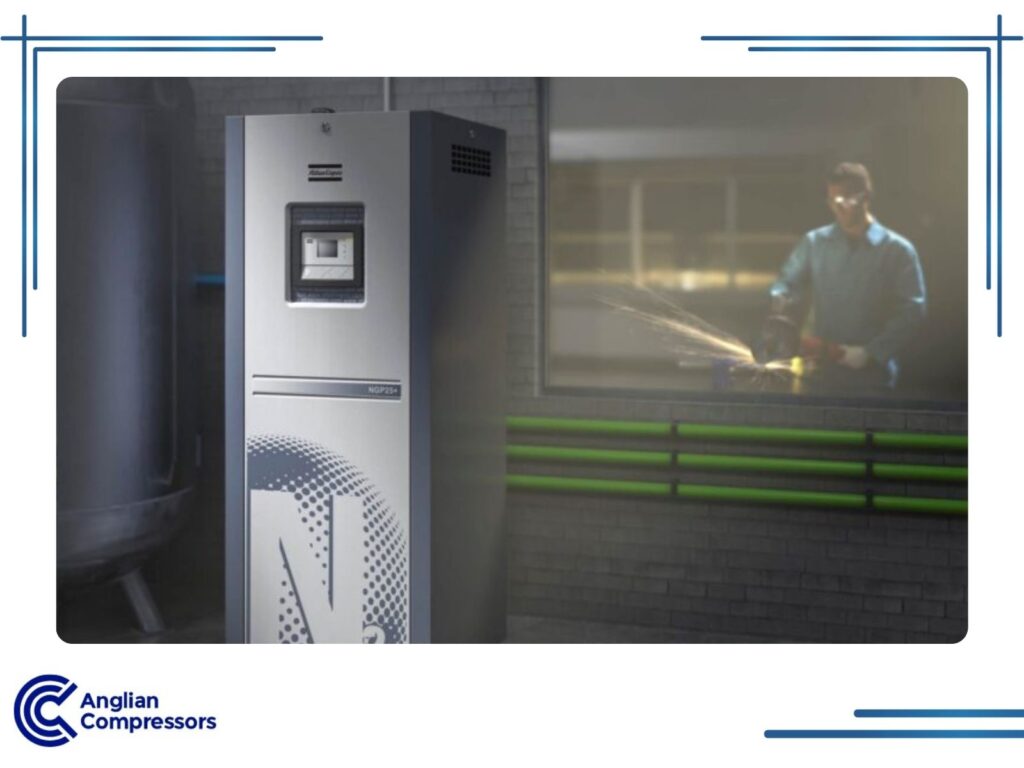What is membrane nitrogen generation?
Nitrogen plays a pivotal role in various industrial sectors, thanks to its inert properties.
In food and beverage packaging, it extends shelf life by displacing oxygen, preventing spoilage, and preserving freshness. Pharmaceutical manufacturers use nitrogen to ensure the stability and purity of their products by creating an inert atmosphere that prevents oxidation and contamination. In chemical processing, nitrogen is used for blanketing and purging, safeguarding sensitive reactions and maintaining the integrity of the process.
These industries need a 95% mix (or better) of pure nitrogen for commercial purposes.
Traditionally, industries relied on deliveries of nitrogen gas in cylinders or bulk tanks, which can be cumbersome, expensive, and prone to supply disruptions. However, a paradigm shift is occurring with the emergence of on-site nitrogen generation using membrane technology.
This innovative approach allows businesses to produce their own nitrogen supply directly at their facility, eliminating the need for external deliveries and offering greater control over their nitrogen production.
Membrane Nitrogen Generation
Membrane nitrogen generation produces nitrogen gas on site from compressed air. It works through hollow fibres that let oxygen pass through while keeping nitrogen in the main flow.
You will find these systems in many British factories. A medium-sized food packer in Leeds installed one last year to replace their weekly nitrogen deliveries. The unit sits in a corner of their compressor room, taking up about as much space as two filing cabinets.
The kit needs dry, clean air to function properly. Wet air clogs the membranes, which means more maintenance and shorter membrane life. Most setups include coalescing filters that need to be changed every 6,000 hours.
Unlike PSA systems, membrane generators do not cycle between adsorption vessels. They are quieter but use more power for high-purity output. A 50 Nm³/hr system typically draws about 22 kW when producing 99% pure nitrogen.
Local businesses use these for various jobs. A Sheffield metal fabricator uses nitrogen for laser cutting. Their system cost £12,500 and paid for itself within 14 months compared to cylinder rental.
The membranes themselves last about 5 years with proper filtration. Replacement costs roughly £3,000 for a mid-sized unit. The control panel is straightforward – just pressure gauges, a purity monitor, and power indicators.
Most users report that the technology is quite reliable. Breakdowns are rare, though cold winter mornings sometimes cause condensation issues if the intake air is not properly heated.
How Does Membrane Technology Work?
With a nitrogen membrane generator, small membrane modules store polymer fibres inside. These are numerous and hollow, to allow both air flow and permeation to occur.
Permeation: What is it?
Permeation is a process whereby compressed air enters, first inside the membrane modules, and later the polymer fibres themselves. As previously cleaned, high-pressure compressed air moves through the fibres, it helps to separate distinct elements.
Gas separation, oxygen molecules, H2O, carbon dioxide, water vapour, air impurities, and oil in a vapourised form permeate the membrane fibres. This permeation process occurs at a different rate, depending on what the element is.
Fast-permeating gases like H₂O, CO₂, and oxygen are quickly removed, while nitrogen, a slower-permeating gas, is retained at desired purity levels.
H2O is removed very quickly, whereas oxygen lags a little. Argon – which is present at a roughly 1% rate in Earth’s atmosphere – will partially permeate when given time to do so. However, some Argon will still be present with the remaining nitrogen.
It’s All About the Membranes
The membranes have a concentration gradient surface on either side. This allows for distinct elements to permeate the sides while nitrogen flows through the hollow fibres unimpeded.
Atlas Copco’s NGM membranes are tailored to specific industrial requirements, with pore sizes engineered to achieve precise purity levels needed for industries like food, beverage, and pharmaceuticals.
When it comes to N2 purity, the size of the individual pores within the membranes is a significant factor. Therefore, the membranes are specific to the purpose and the purity levels required.
The Need for Venting
No waste gas is expelled during the N2 membrane-based production process. Venting so-called “fast exhaust gasses” is necessary, though, including Argon, H2O, and oxygen. Without doing so, the polymer fibres eventually become clogged, and permeation efficiency suffers. Then purity levels decline sharply too.
Membrane nitrogen generators from Atlas Copco include advanced venting mechanisms to sustain long-term operational efficiency without compromising purity.
Membrane-based generators include a permeate vent to address this issue.
Benefits of Using a Membrane Nitrogen Generator
Membrane nitrogen generation is a superior solution for many industries. By producing nitrogen on-site, businesses gain control, cut costs, and reduce their environmental impact. But what are the specific advantages that make this technology so appealing? Let’s dive in and explore the key benefits.
Cost Efficiency
Membrane nitrogen generation offers a compelling advantage in terms of cost efficiency. Unlike traditional methods like cryogenic distillation, which require significant energy input to separate nitrogen from the air, membrane technology operates at lower pressures and temperatures. This translates to a substantial reduction in energy consumption and, consequently, lower operational costs.
Atlas Copco systems operate with energy-efficient designs, ensuring businesses achieve rapid ROI while minimising operational overheads.
Additionally, eliminating the need for frequent deliveries of nitrogen cylinders or bulk tanks further contributes to cost savings. Even storing nitrogen cylinders costs real estate and space.
For businesses that rely on a consistent and reliable supply of nitrogen, the cost-effectiveness of membrane generators can lead to a rapid return on investment. By reducing energy bills and eliminating delivery charges, membrane nitrogen generation becomes an attractive option for long-term cost optimization.
Purity and Control
One of the most significant advantages of membrane nitrogen generation is the ability to tailor nitrogen purity to specific industrial requirements. Membrane systems can produce nitrogen with purities ranging from 95% to 99.5%. This flexibility allows businesses to fine-tune their nitrogen output to match the exact purity needed for their processes, avoiding unnecessary overproduction of high-purity nitrogen, which is wasteful and costly.
This flexibility aligns with the demands of pharmaceuticals and food packaging industries, avoiding unnecessary costs associated with over-specification.
This precise control over nitrogen purity not only ensures optimal performance in various applications but also contributes to cost efficiency. By generating nitrogen at the required purity level, businesses can avoid paying for higher-purity nitrogen than they need, further maximising the economic benefits of membrane technology.
Simplicity and Reliability
Membrane nitrogen generators are renowned for their simplicity and reliability. Unlike complex cryogenic distillation systems, membrane generators have a straightforward design with fewer moving parts, making them less prone to breakdowns and requiring minimal maintenance. This translates to greater uptime and reduced maintenance costs.
Atlas Copco designs its generators with plug-and-play functionality, ensuring quick installation and minimal personnel training.
The ease of installation is another advantage of membrane technology. These systems are compact and modular, requiring minimal floor space and infrastructure. Their straightforward operation means that personnel with minimal training can effectively manage the nitrogen generation process. This combination of simplicity and reliability makes membrane nitrogen generation a dependable choice for businesses seeking a continuous and hassle-free nitrogen supply.
Environmental Advantages
Membrane nitrogen generation is not only economically sound but also environmentally friendly. Unlike traditional methods, which often involve energy-intensive processes and transportation of nitrogen in heavy cylinders or tanks, membrane technology has a smaller carbon footprint. By generating nitrogen on-site, businesses can reduce their reliance on transportation, minimising emissions associated with deliveries.
On-site generation eliminates transportation-related emissions and ensures compliance with sustainability goals.
Furthermore, the lower energy requirements of membrane generators contribute to a more sustainable approach to nitrogen production. By choosing membrane technology, businesses can be environmentally responsible and friendly all at a cheaper operational cost.

How Membrane Technologies Compare to Pressure Swing Adsorption (PSA)
Nitrogen can be generated on-site using either membrane separation or pressure swing adsorption (PSA). Both methods use compressed air as the source material.
Membrane systems push air through hollow fibres that let oxygen escape through their walls. A typical setup at a Birmingham packaging plant runs at 8 bar pressure and uses about 17 kW per hour to produce 40 cubic metres of nitrogen. The membrane bundle resembles a collection of straws packed into a metal tube.
PSA technology works differently. It uses carbon molecular sieves that trap oxygen while letting nitrogen pass through. The beds switch back and forth – one adsorbing while the other regenerates. A medium-sized PSA unit from a UK manufacturer contains roughly 200 kg of carbon sieve material.
The differences matter for practical reasons. PSA systems achieve higher purities, up to 99.999%, but consume more power. A Manchester brewery switched from PSA to membrane when they realised 99.5% purity was sufficient for their bottling line. They saved £4,200 annually on electricity.
Maintenance requirements differ, too. Membrane filters need changing every 6 months, while PSA systems require valve servicing roughly every 8,000 operating hours. The local service engineer for a Nottingham textile firm visits twice yearly for their membrane system, compared to quarterly for PSA units.
PSA generators make some noise during the switching cycle – about 75 dB at one metre. Membrane units run more quietly at around 65 dB. This matters in confined spaces or when installed near office areas.
Membrane systems take up less room – about half the footprint of equivalent PSA units. A standard 100 Nm³/hr membrane generator measures roughly 1.2 × 0.8 metres, while the PSA alternative needs 2.3 × 1.1 metres of floor space.
Let Anglian Compressors Help Guide You
Choosing the right nitrogen generation technologies for your business isn’t easy. While there are key benefits to adopting a membrane generator over a PSA system, we can advise correctly for your specific needs.
This way, you’ll receive a best-in-class nitrogen generation system with excellent energy efficiency, using the smallest possible footprint.
Contact us below.
FAQ
What is the working principle of a membrane nitrogen generator?
Membrane nitrogen generators separate nitrogen from compressed air using hollow fibres. The fibres have tiny pores that allow oxygen and water vapour to pass through while keeping nitrogen in the main flow. A typical unit runs at 7–10 bar pressure. The membranes look like bundles of drinking straws packed into a metal housing.
The pre-filters need checking weekly to prevent oil contamination from reaching the membrane bundle.
How does membrane nitrogen generation compare to PSA systems?
PSA systems use carbon sieve beds that grab oxygen molecules while letting nitrogen pass. They switch between beds every few minutes.
Membrane units take up less space – about 1.5 square metres for a standard 40 m³/hr unit compared to nearly 3 square metres for an equivalent PSA. PSA achieves higher purity (up to 99.999%) but costs more to run.
What are the advantages of using a membrane nitrogen generator?
Membrane generators need less maintenance than cylinder deliveries or PSA.The membrane elements last 5 years if kept clean.
On-site generation means no more paperwork for gas deliveries or cylinder rental. A Leeds bakery switched to membrane generation and freed up the storage cage they had used for nitrogen bottles. Their system cost £16,500, which was paid back in under two years.


